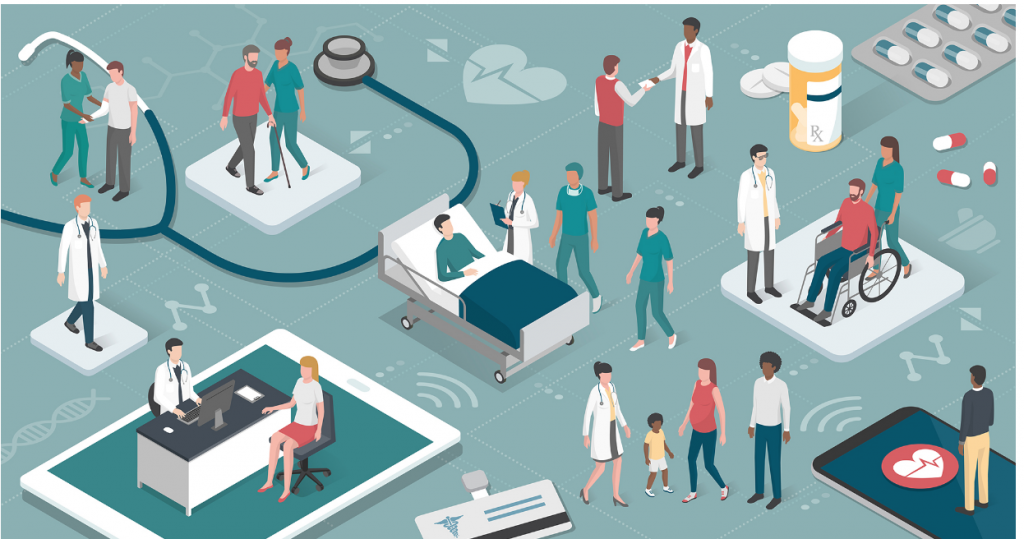
Telemedicine is changing the medical profession around the world.
Broadband Expansion, Telemedicine Get Major Funding Boosts from Congress
The Covid-19 pandemic produced a big change in how we go to the doctor. Telehealth became a highly used tool while the virus raged. Perhaps you are one of 130 million people that were seen by their medical provider online or on their smartphone.
A story in fastcompany.com explains how Congress has become pro-telehealth in a big way. In the enormous omnibus spending bill, Congress directed a lot of money to CMS or Center For Medicare-Medicaid Services.
Before the public can take advantage of telehealth’s digital access for medical assistance, there has to be an update in broadband and rural accessibility.
Author Ruth Reader explains some of the details this way:
The provision does a few things. First, it extends coverage for certain telehealth services under Medicare and Medicaid for 151 days after the pandemic-era public health emergency comes to an end in April. Second, it adds audiology, occupational therapy, physical therapy, and speech pathology to its list of reimbursable telehealth services. Third, over the next year, the Medicare Payment Advisory Commission, an independent federal body that advises Congress on Medicare policy, is charged with studying the use and impact of telehealth services on patients with an eye to whether it diminishes the quality of care.
“It’s a positive sign that Congress is starting to realize the value of telehealth service,” says Nicol Turner Lee, senior researcher and director of the Center for Technology Innovation at the Brookings Institution. “Now we have to move that temporary interest into a more permanent structure.”
Since telehealth was so new, the insurance companies and the medical providers were not on the same page regarding how these services were going to be billed.
Over the last two years, there have been several legislative efforts to ensure that telehealth services can continue to be reimbursed under Medicare and Medicaid, even after the pandemic is officially declared over. Telehealth companies like Teladoc have been funneling hundreds of thousands of dollars into lobbying efforts to get telehealth permanently covered by CMS.
But more broadband access is desperately needed in many rural areas of the U.S. Now, broadband expansion is supposedly coming.
“After we spend that $65 billion, that excuse will be gone,” says Senator Mark Warner of Virginia, referring to the money earmarked for broadband expansion.
Now it looks like substantial funding is in place to make this a big step forward in public health. The combination of AI evaluating x-rays or visual scans of patients from halfway around the world, and the audio/visual interaction between doctor and patient completely changes the way care can be provided.
Objections to Expanded Government Investment
As great as funding bigger broadband with and promoting telehealth may sound, some people object to this. And the reason is simple. When you see a provider in person that’s called value-based care. Telehealth is far more lucrative that the in-person model.
Niam Yaraghi, assistant professor of business technology at Miami Herbert Business School and a senior Brookings fellow, sees a different argument against telehealth expansion.
“What I’m concerned about is that they would expand the billable services to telehealth, and they are going to kill their whole incentive for value-based care,” he says.
In other words, by focusing so much of its attention on continuing telehealth access for patients, Congress could inadvertently prompt healthcare providers to abandon the value-based care model in favor of a more lucrative pay-per-service approach.
While there has been some evidence that it can curb costs, some healthcare experts question whether or not value-based care can deliver better healthcare for patients than they’re already getting.
If you have been to a doctor’s office in the past 5 years you know it is not the Marcus Welby model of medicine that some of us grew up with and long for again. Perhaps with funding, some amazing algorithms, and boundaries with what medical issues can be treated with telehealth. Some things require doctor-patient meetings face to face.
read more at fastcompany.com







Leave A Comment